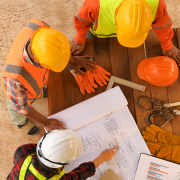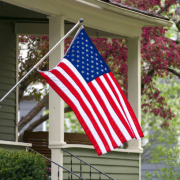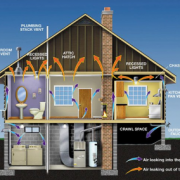KANSAS CITY, MO (May 2, 2024)
As Kansas City debates the future of its building codes, Metropolitan Energy Center (MEC) urges lawmakers to consider what’s at stake: the safety, health, and long-term affordability of our homes. Kansas City’s current energy code not only ensures new and renovated homes and buildings meet modern safety and energy standards but also keeps utility bills low and living conditions healthy.
With a recent proposed ordinance set to push the code back to 2012 levels, MEC is asking council leaders to consider the health and safety risks to most Kansas City residents if the rollback is allowed to pass.
“Strong building codes are not bureaucratic red tape; they are safeguards that ensure every home built in Kansas City is a safe and cost-effective place for us and our children to thrive,” said Kelly Gilbert, MEC’s Executive Director. “Lowering our standards threatens public health and raises long-term costs for both homeowners and renters — it undermines our community’s resiliency.”
Why Building Codes Help Everyday People
Health and Safety: Updated codes mean new and renovated homes will be able to handle extreme weather, reducing health emergencies during heat waves and cold snaps. They also ensure better air quality and indoor climate control, crucial to saving the lives of asthmatic children and the elderly, as well as anyone with a chronic illness sensitive to mold, respiratory issues, and more.
Economic Savings: Energy-efficient homes reduce utility bills — enough to give relief to your wallet. With a home updated to meet KCMO’s current energy code, you could save hundreds in utility cost per year.
Community Impact: Strong codes drive quality construction, bring quality jobs, and ensure more Kansas City homes, new and renovated, owned and rented, are future proofed.
Technological Relevance: The new energy code incorporates knowledge and technology to keep the Kansas City region updated and relevant.
Your Voice Counts
As the KCMO City Council discusses loosening building codes to relieve strains on builders and developers, your voice is important. Let’s not cut corners when health and safety is at stake. Reach out to your council members. Attend the Finance, Governance, and Public Safety Committee meeting on Tuesday, May 14. Show your support for keeping strong building codes that protect everyone with a home.
“Every email, every call, and every raised hand at a council meeting adds up,” said Mary English, Buildings Department Manager at MEC. “Let’s remind our leaders that quality homes mean good health and safety. They need to know that cheaper construction causes higher utility bills at home. Rolling back the code is simply bad for Kansas City.”
For more information on how you can get involved, visit metroenergy.org/energy-code-faq.
About Metropolitan Energy Center:
Metropolitan Energy Center is a non-profit organization that has been working since 1983 to promote energy efficiency, environmental health, and economic vitality in the Kansas City region. MEC believes in building a sustainable future through community education, advocacy, and partnership.
KANSAS CITY, MO (April 25, 2024)
Amid the rising steel frames and freshly poured foundations of Kansas City’s bustling construction sites, a pressing debate has emerged over the true cost of building to the city’s newly updated energy code. While one vocal local professional association has recently been speaking publicly about staggering $30,000 average per-home cost increases due to updated building codes, ongoing code compliance work by building professionals partnered with Metropolitan Energy Center (MEC) has revealed more grounded estimates of about $10,000 in increased costs.
This stark contrast raises questions about the real economic impact of these codes on housing affordability, commercial building costs, and construction pace. Public complaints that the recent code update has led to a permits backlog and a construction slowdown do not tell the whole story. In fact, current codes provide builders and contractors with multiple shovel-ready paths to affordably meeting codes requirements.
Most of the complaints are focused on only one choice for compliance — the strict Prescriptive Path. But that choice is not the only one. Metro-wide today, builders and contractors also use the Performance Path. This customizable option not only follows all recently updated building codes, it also has long provided an efficient and affordable way forward for new and existing construction projects.
The Performance Path option was developed in earlier iterations of International Energy Conservation Code (IECC) and is currently used by cities and counties across the metro and the state of Missouri. Projects use it to inexpensively tailor solutions that will achieve better Home Energy Rating System (HERS) scores. A building’s HERS score reflects its ability to affordably maintain good occupant health and comfort.
Existing Homes Can and Do Meet Code
The Performance Compliance Path isn’t only for new construction. Builders and contractors often upgrade existing building stock that also must meet updated codes. Mary English, Program Manager for building sciences at MEC, explains the need for this additional focus. “The majority of the Kansas City region’s residential units are in buildings constructed before the latest energy standards were conceived — therefore, retrofitting existing homes is equally important to improve overall public health. And there are very robust federal funds available to help pay contractors to do this work both in new construction and retrofits.”
Existing property renovation can be more cost-effective than new construction. Even for retrofit projects, the Performance Compliance Path provides a practical, affordable way forward for builders and contractors. By improving older homes, contractors in the Kansas City region can make significant strides toward improving public health, while achieving smaller building carbon footprints.
Dual Approach Means Healthier Residents
Builders and contractors are Kansas City’s heroes when they build energy-compliant new buildings and upgrade existing ones. These structural experts can prevent future occupant health problems and increase indoor comfort levels.
Energy efficient buildings lead to good health. This concept is now widely accepted in the healthcare industry. A recent joint study by MEC and Children’s Mercy Kansas City indicated that asthmatic children living in energy-efficient homes experienced significantly fewer asthma-related medical emergencies. When building standards are followed, Kansas City residents have healthier living environments and lower healthcare costs.
“Contractors who use the Performance Path can achieve great building quality, which in turn reduces long-term building occupancy costs,” said Kelly Gilbert, Executive Director of MEC. “It’s a strategic approach to ensuring that Kansas City’s new and existing structures are affordable, energy efficient, and healthy for everyone.”
About Metropolitan Energy Center:
Metropolitan Energy Center is a non-profit organization based in Missouri, established in 1983. Through community partnerships and business relationships, MEC supports energy conservation projects that build resource efficiency, environmental health, and economic vitality. The organization provides extensive resources about rebates, tax credits, and financial assistance to anyone looking to upgrade a property. They want to see the benefits of building performance accessible to all people.
Sign up for our newsletter to stay up-to-date on industry news, funding opportunities, and more.
July 12, 2023
Metropolitan Energy Center (MEC) is pleased to announce we were one of 27 applicants to get the green light from the U.S. Department of Energy to provide workforce development in support of better building policy.
MEC brought together partnerships within their extensive and diverse multistate network of 30 regional, state, and local community partners—including two growing community-based organizations—to build a workforce of energy-efficiency-related vocations in disadvantaged communities in urban and rural areas across Kansas and Missouri.
The selection rewards months of collaboration in response to our region’s need to upgrade its aging buildings to be more efficient, durable and healthy for human habitation. The initiative intends to support communities’ efforts to adhere to best-practice energy efficient construction for new and existing buildings—buildings science practices that lead to better human health, comfort, affordability, and resiliency in built environments.
The construction industry is facing change after the City of Kansas City, MO led a recent effort to update critical energy policy in our region. Other municipalities are expected to follow suit, an additional workforce is needed to support these efforts. Unfortunately, adequate training for energy efficiency and building science haven’t always been available. This initiative corrects that issue.
“As technologies improve and the industry learns more about the connection between building efficiency and human health, it is imperative that every community has access to resources to implement updated building construction policies,” said Mary English, MEC’s Building Performance Program Manager. “Especially as extreme weather events intensify, creating a skilled labor force to work in building performance vocations will lead to better buildings, better jobs, and more liquidity in the communities that have been left out of economic benefits by similar programs in the past.”
MEC is eager to begin working on the project with partners to equip communities across Kansas and Missouri with safe and healthy places to live, work and play for years to come.
About the Bi-State Partnership: Our partnership includes these organizations: Beyond Housing; Boys and Girls Club of the Ozarks; Cabanne District Community Development Corporation; City of Columbia, Missouri; City of Kansas City, Missouri; Climate Action KC (Building Energy Exchange Kansas City); Climate + Energy Project; Hathmore Technologies; J. Gordon Community Development Corporation; Kansas City Kansas Community College; Kansas Department of Commerce and Office of Apprenticeship; LivZero, LLC; Mid-America Regional Council; Midwest Energy Efficiency Alliance; Missouri Alliance of Boys and Girls Clubs; Missouri Botanical Garden and EarthWays Center; Missouri Gateway Green Building Council; Building Energy Exchange St. Louis; Missouri Department of Higher Education and Workforce Development; Missouri University of Science and Technology; National Institute for Construction Excellence; RATERusa, LLC; Resiliency at Work 2.0 Career and Technical Education; State of Missouri, Department of Natural Resources’ Division of Energy; Strategic Workforce Development; University of Missouri – Columbia; Verdatek Solutions, LLC; Workforce Partnership (Kansas); Washington Wheatley Neighborhood Association.
Kansas City, Mo. (August 1, 2023)
Results from a new preliminary study indicate that weatherizing living spaces can dramatically improve children’s health by improving indoor air quality and reducing exposure to outdoor air pollutants. The research project came about due to previous work and research of the Children’s Mercy Kansas City (CMKC) Healthy Homes Program, where hospital staff witnessed positive health outcomes with many of their young asthma patients whose families had enrolled in the program and received home weatherization repairs.
Dr. Elizabeth J. Friedman, MD, Medical Director of Environmental Health at CMKC said, “This is a great example of both how much our built environment can impact our health and why it is so important to consider our patients’ lives beyond our clinic walls.”
Weatherization is a building upgrade process that keeps indoor air in and outdoor air out. A good weatherization upgrade keeps you safe and comfortable in your home, no matter what the weather is doing. For nearly a decade, Kansas City-based nonprofit Metropolitan Energy Center (MEC) administered weatherization and energy efficiency renovations under various partnerships, including the City of Kansas City, MO’s EnergyWorks KC (EWKC) program.
A research partnership with MEC, CMKC and the Center for Economic Information at the University of Missouri Kansas City (CEI) brought even bigger data to the table for a more comprehensive picture of potential health improvements. Staff at CMKC and CEI matched MEC-weatherized homes with CMKC historic health data for acute care visits in children with asthma living in the homes. A research database maintained by CMKC provided encounter-level historic pediatric asthma data, and the CEI team collected additional geographic and census data as part of the KC Health CORE research collaboration with CMKC.
The team compared frequency and severity of healthcare visits before and after the upgrade and found “as much as a 33% reduction in the frequency of acute care visits for children with asthma” who resided in homes that received energy efficiency improvements.
Kevin Kennedy, Environmental Health Program, Children’s Mercy Kansas City, said that for their patients’ families, the preliminary report indicates that “even if you participate in a program like this weatherization program just to make improvements to your home, and not because you were thinking about a health impact, there can also be big improvements in your health, especially if you have a chronic respiratory condition like asthma.”
Kelly Gilbert, Executive Director of MEC said, “this stunning result demands more research to discover which home upgrades have the biggest impact on health, and we look forward to supporting that work in the future.”
The research team is preparing to develop and submit a peer-reviewed academic report with the goal of publication in a research journal later this year.
written by MEC’s Buildings Department program manager, Mary English
On January 5th, 2023, Kansas City’s largest utility, Evergy, announced plans to update the Hawthorn coal-burning power plant with a solar field1. This will be a 10-MW solar array which on average can power roughly 2,000 single family homes a day. This move is seen as a hopeful sign for activists pressing for Hawthorn’s closure.
This a textbook example of the term that has been gaining traction in recent years: environmental justice. The plant’s potential closing, if it happens down the road, falls right in line with the Environmental Protection Agency (EPA) definition which in brief is: “the fair treatment and meaningful involvement of all people regardless of race, color, national origin, or income with respect to the development, implementation and enforcement of environmental laws, regulations and policies.”
The Hawthorn plant is located next to neighborhoods with lower incomes who have borne the brunt of power generation and other industries’ negative impacts on the metro’s air quality. There is much more work like this in our region and around the country that needs to be done. (For a fantastic, if irreverent, report on some other examples of environmental justice wins and losses see the Last Week Tonight with John Oliver episode broadcast in May on this subject 2.)
However, as I like to say, these are “no-brainer” examples of immediate changes needed for a more fair and just society for our entire region. There are many other ways our fellow residents suffer from environmental injustices, however, that are hidden from view from those not directly involved in this subject through work or activism.
One such example presented itself in a recent policy argument in one of the cities that make up our metropolitan area. And as our metropolitan’s city-center – Kansas City, MO – is in the middle of a similar policy discussion currently, I want to talk in more detail of how this is relevant to the discussion over environmental justice.
I’m talking about the policy decisions over upgrading building energy codes. Kansas City, KS, just passed a “new” energy code. New being in quotation marks because—due to the residential portion of the codes passage being heavily amended—it’s safer to classify it as “Meet the New Code, Same as the Old Code.”
Recently I discussed the many ways better energy codes positively impact our work and home lives 3. Since writing that piece, Kansas City, KS, decided to punt any marked improvement to their residential energy code, taken from the 2018 iteration of the International Energy Conservation Code 4 (IECC) (fortunately, the amendments in the commercial code were removed).
Their reasoning was based on the fear-based excuse that it will price lower income earners out of buying a home. (Since both Missouri and Kansas are on the “home rule” law, every city council in our metro area is in charge of picking their own building codes. Currently, better mostly unamended 2018 IECC codes have not produced this problem in both Columbia, and St. Louis, MO. New-home building permit-pulls in both of these cities have risen since the codes’ passages, in fact 5.) This argument, however, is prevalent; and can be a winner with policymakers because it packs an emotional punch related directly to the American Dream.
I want to expand on this idea. The American Dream as defined by this reasoning is all about owning your own home, apparently, even if said home is built with out-of-date technology and therefore not as durable, comfortable, and healthy as it could be for the residents. The code that Kansas City, KS, just passed, like most of the rest of our metro area’s cities, is based on a home-building process that is decades old. Following this argument that everyone should be able to buy a house, why don’t we just throw up some wood slats and tar paper like they did in the olden days and call it good?
We don’t, of course, because it’s a ridiculous notion. Updating the energy code incorporates what we know now about how building efficiency is connected to human health and mental well-being. It’s not enough just to have four walls, a ceiling and roof and call it good. We must make sure that our structures are not also making us sick and poor. As humans have made great technological advancements over the last 100 years, we’ve incorporated them into minimum building standards as part of the social contract with the citizenry.
And that—the social contract—is really what Environmental Justice means to me: keeping this important contract up to date and fair for all. When people are driving over our bridges, riding roller coasters, eating packaged food, just to list a few, they are doing so with the understanding that the laws protect them from injury or death. (And yes, bad energy codes in the most extreme examples can lead to both of these things 6)
Environmental justice means that the social contract should apply to everyone—not just those that can afford a custom-built home that fixes all the flaws contained in the current energy code in our region. Roughly half of our residents are renters. Don’t they deserve a home that isn’t prone to mold growth and discomfort due to poorly installed insulation and insufficient ventilation?
And if you want to argue that home buyers matter more for some reason, then why should they be subject to buying a “ready to wear/ off the shelf” new home that has been built with out of date and flawed technology? People don’t generally think about the health and safety aspects of homebuying because they assume policymakers and administrators have their backs covered in relation to the boring stuff.
And yes, insulation and air sealing are boring. As an industry professional for 15 years, trust me, I get it. I have audited hundreds of homes in this metro area—many built under the same old technology that is still alive and well in most of our townships—to have just a small portion of homeowners follow through and pay to upgrade their houses. They’d rather have new kitchen cabinets or light fixtures. A home is an emotional extension of ourselves and most of us have only so much money to spend on upgrades. Insulation is going to be picked last if the house is seemingly livable enough with a few space heaters and added blankets in the TV room.
For families with children that suffer from childhood asthma caused by energy inefficiencies, however, and who don’t have the means to choose from a list of home upgrades, where is their signed social contract to the American Dream?
It could be right here in Kansas City if we had the will to implement solutions for our buildings’ occupants. As I type this, the news that a new climate mitigation spending package may finally be put before Congress for passage has broken. It includes the largest climate action spending in American history. This is great news for our cities that are trying to right the wrongs of discrimination, inequity in our infrastructure spending, and neglect of previously redlined neighborhoods in general.
With this funding in mind, here is my dreamed-up short list of solutions:
- KC area municipalities should all pass at a minimum the unamended 2018 IECC or, better yet, 2021 commercial and residential codes.
- Implement a minimum energy performance standard for our commercial buildings 7 —including multi-family residential—with a deadline to reach a threshold of energy performance.
- Create a funding process to help homeowners with lower incomes spend money on the boring stuff like insulation, air sealing and better HVAC systems. Additionally, this process should be kept simple and accessible (too many of these types of programs in the past haven’t been.)
- Modify any tax laws to eliminate gentrification or landlord abuse through raised rents, as money gets poured into revitalizing previously neglected communities.
- Indirectly related: increase the minimum wage to something to live on with dignity and respect in a 40-hour work week.
- And, finally, invest in jobs training to create a work force that can be there to do all the work contained in the above solutions.
When 2020 was upon us in full force and we all went indoors to sequester ourselves to work and live 8 we were experiencing a what is called a collective trauma. Many of us lost loved ones. And there was a window into our fellow humans’ suffering and those whose situations were worse – or better off – than our own.
But there was a sense that we were entering a new era for the better perhaps. Our offices closed, pollution dropped and you could actually smell the fresh change in the air. The conversation around buildings turned to health, building management, and ventilation.
That time has come and gone unfortunately as we’ve been pushed back into business as usual. The deep class divide remains unchanged and buildings are just one way that divide manifests. Energy code will not impact the ability to own a home. It impacts the ability to live and work in a healthy environment though.
Kansas City could be a leader among cities on how to update the social contract with its citizens by offering better buildings, which goes along with cleaner power generation, infrastructure, and thus cleaner air.
To me, that means Environmental Justice really can just be called Justice. Living with decent, healthy and equitable shelter should be considered a civil right, in my humble opinion.
But what does “Environmental Justice” mean to you?
Update: note that an earlier version of this blog incorrectly stated that Hawthorne plant was being shutdown by Evergy. This was inaccurate. It is a plant that environmental justice advocates have been requesting get on the list of plants to be closed. The solar array that Evergy is building is next to Hawthorne, but it does not preclude Hawthorn from being close permanently.
Footnotes
1 https://www.powermag.com/evergy-to-build-solar-array-at-kansas-city-coal-power-plant-site/
2 https://www.youtube.com/watch?v=-v0XiUQlRLw
3 https://mec.bluesym10.work/2022/06/energy-codes-for-our-future/
4 https://codes.iccsafe.org/content/iecc2018
5 Public data received from codes departments in these cities.
6 https://www.nbcnews.com/news/us-news/families-sue-buildings-owners-bronx-fire-killed-17-people-rcna15384
7 https://www.imt.org/st-louis-passes-first-building-performance-standard-in-the-midwest/
8 Well…not all, some of us were luckier than others. Our healthcare providers and grocery store labor to name two—who kept up their end of the contract by working through brutal shifts and dangers to their health pre-vaccine—didn’t get to shelter in place. But that is another, albeit related, blog
written by MEC’s Buildings Department program manager, Mary English
One of the things I love about my profession is the fact that I learn new things regularly. My most recent new learning was inspired by the expression “April through October Houses” during an informative and entertaining radio interview with the host of Cowtown Conversations, Joseph Jackson, on his KKFI 90.1 FM show. He spoke this phrase in reference to homes in Kansas City that may be rented to tenants in the spring, only to have the leases broken when autumn’s chill settles into the air and the homes become too cold to inhabit.
The topic deserving of Joseph’s surprising reference was easy building performance and home weatherization tips that anyone can handle. In light of my own epiphany about a previously unconsidered perspective, I’d like to expand on a few statements from that interview that we didn’t have time to cover. I feel that knowing these things about the task of making a building more energy efficient would help even the most cash-crunched households achieve warmer homes and better health.
1 “April through October” conjures thoughts of beautiful spring and fall colors—not to mention nicer weather—sandwiching the summer months of what can be oppressive heat in the Kansas City region. So when Joseph alerted me to an expression that is in among renter vernacular, all I could think was, “If these homes are so uncomfortable that the occupants have to live elsewhere in the winter, they also must be enduring some serious discomfort in June-August as well.” As I’ve been witness to many homes in need of repair and energy upgrades in a former life as a home energy auditor this is not a surprising revelation.
During the interview, we discussed home weatherization and tips for residents that have the money and authority to weatherize. But for renters, the weatherization task gets more difficult since renters don’t own their homes. The problem can be viewed as systemic—renters understand both the discomfort of an extreme indoor temperature and in most cases, the pain of a high utility bill that results when they try to return the home to livable temperatures. If the landlord is not empathetic or receptive to making energy upgrades for their renters? Voila: the April through October House has been enabled by an inequitable system of utilities being paid directly by tenants.
Ethical and moral considerations aside, if only this class of landlord realized this key truth about building management, the April through October Home would likely evaporate: An efficient home leads to a better bottom line because it keeps renters who want to stay, instead of forcing them out due to unbearable discomfort. Energy efficiency upgrades don’t cost in the long run. They pay landlords back. The National Apartment Association estimates that high turnover can consume up to 9% of gross rental income for larger multi-family residences, so landlords would come out on top, if only their renters could continue living in the buildings.
For those people reading who do own their homes—and pay their own utility bills—the return on investment for home energy efficiency upgrades is better than most financial products. Plus, we are not even addressing the healthcare costs endured due to medical problems caused by inefficient homes.
Anyway, if I could wave a magic wand, I’d make all landlords cover the cost of utilities for tenants in their rent. This would incentivize the building owners to actually make improvements on their “April to October” buildings. Then they might want to actually make their properties as efficient as possible to save money, and realize lower turnover rates as well. Happy renters and wealthier properties owners: I’d call that a win-win.
2 Speaking of weatherization, Joseph came prepared to talk about building improvements. In addition to his extensive experience doing his own energy retrofits, he had prepared a well-researched list to share with the program’s listeners. Things like caulking around windows, adding weather-stripping, and sealing the seams of exposed ductwork were all included and endorsed by yours truly.
One more improvement on the laundry list, though, is adding window weatherization plastic to the interior window frame ahead of the heating season. In the interview, I did not get a chance to say, “If you add plastic to your windows, make sure you remove it in the spring.” This unvoiced sentence has been bothering me since the interview.
Here is why: If you leave the plastic in place for the summer months, you may be inviting mold and eventually wood rot on any window trim or sill sealed in behind the plastic. (Perhaps you don’t open your windows ever and don’t think about it.)
How does this mold and wood rot happen? Well, it has to do with extreme temperature change between the hot and humid summer air outside, and the cool, conditioned air in the house, on the interior side of the plastic. In Kansas City, we get very high humidity which creates a dew point as low as your thermostat setting for a typical central air-conditioned house. That air hits sealed cold plastic around your windows and boom: condensation. Next comes the spores and then the mold growth.
So, remove that window weatherization plastic in the spring for health and durability’s sake.
3This gets me to our conversation regarding professional energy auditors. The happy news is that there are low-cost audits to be had. In the interview, Joseph mentioned that he had received an energy audit for $35.00 by using Groupon. So I “Googled it” and there are indeed deals for Kansas City residents to get energy audits for that low of a price (or even lower) currently using online coupon services like Groupon.
These deals are advertising use of thermal imaging from one vendor, and another advertises “air leakage” testing. However, it is unclear to me if these deals reflect a product that is a full-scale comprehensive energy audit that includes a blower door test with a detailed infrared scan and carbon monoxide safety testing which is how I define “home energy audit.” To review or explain further, a full-scale home energy audit should take roughly two hours minimum – longer for larger houses – and include:
- An infiltration test of the whole house using a Blower Door.
- Thermal imaging once the testing is done with the Blower Door still operating to create a situation where a thermal camera can visually detect air leaks.
- A natural gas line test; and carbon monoxide testing of all gas-burning appliances.
- A report that shows images and gives an executive summary of recommendations with an estimated payback should these recommendations be executed by a contractor or homeowner.
Doing a bit more research regarding the market surrounding home energy audits led to me to realize that the industry looks a little differently than when I was regularly conducting energy audits for homeowners and contractors. Gone are the days where a consultant could offer the audit as a stand-alone product as the industry has adjusted to a loss of subsidized incentives. There are companies that do stand-alone auditing still, but most now are offering low or no-cost energy audits as what is called a “loss leader” product. In other words, the company offers audits as a lead into their other services of insulating your attic and walls, for example.
These professionals may be doing a thorough job of auditing your home, but if the end goal is to get you to buy their other products, what do you think their audit reports are going to be concentrating on for their list of to-dos? I am a big proponent of adding insulation, but the safety and blower door testing are important to make sure these upgrades are being done safely and correctly.
To reiterate, the change reflects the loss of subsidies from regional utility programs as well as robust tax breaks on the federal level to help homeowners pay for these services. Hopefully, that will be rectified by the current administration’s proposed Build Back Better program which is currently making its way through Congress and has $500 million set aside for home energy upgrades and contractor training. Homeowners, contractors, and the energy professional industry would be helped immensely by more subsidies, since it’s clear that most folks aren’t interested in paying $300+ out of pocket for a professional consultant to conduct a full-scale home energy audit.
And as I’ve stated multiple times including a previous blog on this website, this is not just about efficiency—this is also related to the health of building occupants. Building efficiency is related to human health. Period. And since America loves to brag about the American Dream of a “home sweet home,” it’s important that our homes are truly shelters from the elements, and safe from indoor pathogens as well.
Though sparse, there are some resources currently. These are:
- A federal tax credit of up to $500 for energy auditing and to subsidize added insulation, efficient windows, doors and skylights. (Receipts must be shown and it covers a small percentage of the cost incurred.)
- Community Action Agency that offers weatherization services free of charge for low-income homeowners and renters. They have an application process that requires income and utility bill information. Please follow the link to their website for more information.
- And for alternative energy generation* a federal tax credit for installing “solar electric property, solar water heaters, geothermal heat pumps, small wind turbines, fuel cell property, and, starting December 31, 2020, qualified biomass fuel property expenditures paid or incurred in taxable years beginning after that date. The applicable percentages are:
- In the case of property placed in service after December 31, 2019, and before January 1, 2023, 26%.
- In the case of property placed in service after December 31, 2022, and before January 1, 2024, 22%.”
*Note: I will always argue that building owners must address energy-saving measures first prior to installing alternative energy generation. Otherwise, you’re just subsidizing waste; not to mention generation does not address inefficient attributes impacting your health and comfort.
MEC will be updating this on our website too as Build Back Better and utility companies ramp up more programs to help homeowners pay for upgrades. We are also here for you, renters and tenants, if you need us to answer any questions you may have concerning the efficiency of a building where you live. Please reach out – we’re just a phone call or email away.
About Us
Metropolitan Energy Center (MEC) is a 501(c)(3) nonprofit organization. Our mission is to create resource efficiency, environmental health, and economic vitality in the Kansas City region – and beyond. Learn more about us and our programs.
Recent Posts
- Spring Cracks Open at Project Living Proof
- Future Work Is Here: Can We Take the Offer?
- Kansas City’s Agora: Safeguarding our Library as a Sanctuary and Beacon of Innovation
- Kansas City’s Future Depends on Smart Energy and Transportation Investments
- Driving Rural Innovation: Orange EV’s Push for USDA Support










